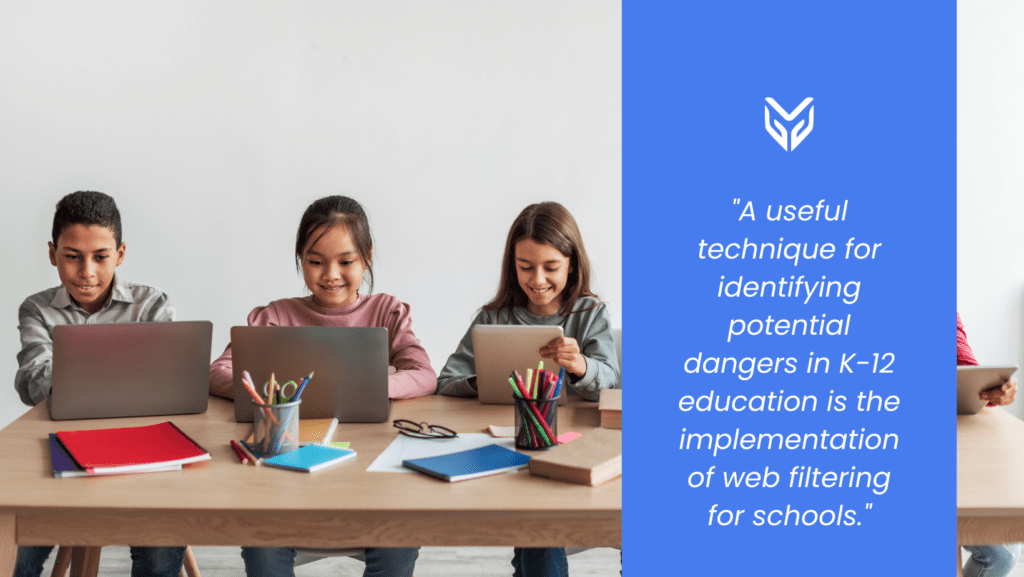NEWS
Student Online Safety: Why You Should Restrict Websites In School

K-12 students dedicate a significant portion of their school time to digital activities. Technology integration has become a vital constituent of their education, and hence, the adoption of 1:1 school districts is progressively increasing to ensure that every student has their own device. Nonetheless, besides enriching the learning experience, the rise of educational technology (EdTech) has also given rise to an escalation in sophisticated and numerous cyber dangers. Consequently, safeguarding the online security of K-12 students is of utmost significance and should be a foremost priority for every institution. That is why teachers ask themselves how to restrict websites in school.
Besides the obvious reasons (such as the severity of cyberbullying threats, dangers of internet scams, and the like), K-12 schools started working on student online safety with more rigor after the Children’s Internet Protection Act (CIPA) passed in 2000. The act mandates that schools and libraries receiving internet services through the E-rate program must block websites on all computers accessible by minors that contain obscene content, child pornography, or images harmful to minors.
CIPA also requires schools to monitor student activity while they’re actively using school or library computers. Some states have regulations that their schools must follow regarding how to restrict websites in school. The main aim of these rules and restrictions is to safeguard kids from harmful and distracting content on the internet.
Internet Use Brings Numerous Benefits but Comes With Its Disadvantages
While the internet is a valuable tool for learning, it also poses several risks that schools need to be cautious of. In addition to various dangers, the internet can be incredibly distracting. Teachers already have enough to contend with when trying to keep students’ attention without having to worry about internet games and social media sites.

There has been some debate about whether or not schools should be blocking certain websites. The primary argument against blocking inappropriate content is that it’s a form of censorship, which could do more harm than good in the long run. Restricting content could prevent kids from fully forming their own beliefs and ideas.
Although this argument has some merit, the damage not blocking harmful websites could cause is much bigger. But of course, students should be free to learn about a range of topics to form their own opinions. So, effective web filtering for schools, accompanied by K-12 threat detection, must be in place.
How To Ensure K-12 Online Student Safety and Restrict Websites in School?
A useful technique for identifying potential dangers in K-12 education is the implementation of web filtering for schools. Such filters work by limiting access to websites and online material that may be inappropriate or harmful to students. Using content filtering software, schools can protect students from online hazards by filtering URLs, content, and categories. This provides effective security to protect students from various online hazards. So, teachers can have better control over students’ on-screen activities and effectively restrict websites in school.

Web filters designed for schools can identify harmful content in school emails and Google searches. Moreover, they can alert school officials if a student tries to access restricted content. This allows educators and school administrators to monitor students’ screen time activities and take appropriate measures to ensure their safety. This capability is an effective and valuable tool for identifying potential threats to K-12 students.
But Additional K-12 Threat Detection Furthers the Protection
Additionally, impeccable student online safety may be accomplished by combining filtering with K-12 online threat detection. So, filtering inappropriate and harmful content is accompanied with detecting potential threats that could harm students.
When students endeavor to access or send worrying content, school officials may be alerted. This feature enables educators and administrative staff to monitor the screen-time activities of their pupils. By being notified about potentially dangerous content, they can take appropriate measures to ensure the safety and security of their students. This ability is a highly effective and valuable tool for identifying potential dangers that may pose a threat to K-12 students.

In addition, certain software also offers supplementary threat detection capabilities that go beyond just preventing access to inappropriate content. These features can also flag potentially harmful Google searches, messages, and other activities on school devices. And with it, essentially cover everything that could pose a threat to students. And to be completely certain the threat is worrying, the combination of AI detection and human reviewing is most effective.
If you’d like to know more about combining web filtering and K-12 threat detection, the two pillars of bulletproof student online safety, feel free to reach out to us and learn more about protecting your students – making sure no threats get past them.





